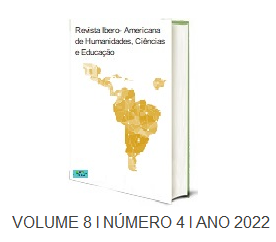THE CHILD'S ANIMATED BRAIN: NARUTO ANIMATION AS A PRACTICAL CONCEPT OF EMBODIMENT IN SCHOOL
DOI:
https://doi.org/10.51891/rease.v8i4.4980Keywords:
Interacting-corporeal. Child. Audiovisual. Drawings. Imaginary.Abstract
Days after days, months after months... Memories about memories, goals about goals... Tears of pain, tears of achievement... Friendships... Perhaps, summarize the animation Naruto, synthesize the feelings emanated in the active contemplator (child). Faced with this, the present article aims to highlight the importance of the animations that the child takes for himself as an object of significant Art to the point of conforming him as an active and creative subject before the matter for the creation of his works. While interacting-corporeal in its concreteness, the Naruto animation allows the contemplator an exchange beyond seeing, being shown henceforth through the field methodology in which the researcher collected several drawings in a timeline in the classroom with children of Elementary I, some of them being inserted in the course of the text. The research is also based, preponderantly, on theoretical reflections with authors of Art/Education, neuroscience, audiovisual communication, among others. As soon as, it is considered that it is more than urgent the formation and interaction of Art/ Educator for the favorite media of their students and, at the same time understand and receive these different and creative artistic productions of these little adventurers who confront and conform their Art from the relations they establish with several other corporeal Indians.
Downloads
Downloads
Published
How to Cite
Issue
Section
Categories
License
Atribuição CC BY

